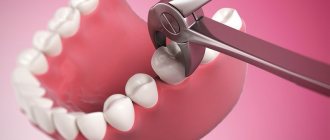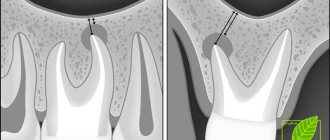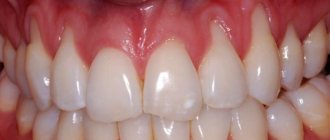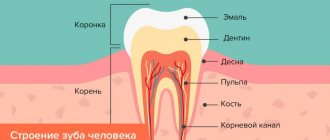MAKE AN APPOINTMENT
- Removal cost
- Indications
- Preparation
- Methods and steps
- Complications
- What to do after the procedure
- Our doctors
- Reviews
- To make an appointment with a doctor
In practice, specialists at Plomba dentistry periodically encounter cases of complete destruction of the crown of a tooth and infection of the root system, in which a purulent-inflammatory process occurs. Most often, this problem can be solved only by removing the root and remains of the tooth. But sometimes the root system can be preserved for subsequent prosthetics. How the removal will be carried out, what measures and tools will be used, the doctor will be able to decide after familiarizing himself with the clinical picture.
What is the tooth extraction procedure?
Removal or extraction is a dental surgical operation during which a tooth is removed from the alveolus of the jaw in whole or in part. In the first case, the crown and root part are removed, in the second, resection or hemisection is performed while preserving the dental unit.
- Complete removal - removal of the crown and roots after separation of the soft tissues and rupture of the ligaments. It is indicated in cases of loosening, significant tooth decay, jaw fractures, or the need for orthodontic (for example, braces) or orthopedic treatment.
- Resection is the excision of the apex of the affected root; it is performed when a granuloma or cyst is detected on it. Access is carried out microsurgically through the soft tissue and jaw bone in the projection of the inflamed area or neoplasm.
- Hemisection is the amputation of one of the roots of multi-rooted (chewing) teeth along with the adjacent part of the crown. It is used for inflammatory processes, the impossibility of tooth-preserving treatment, pathological features or root fractures.
Complete tooth extraction
Preparation for the procedure
First, an x-ray is taken, on the basis of which a diagnosis is made. It is better if the examination is done using computed tomography. Carry out preventive sanitation of the oral cavity.
Features of the orthodontic method:
- a bracket or arch is attached to two adjacent teeth. The device is fixed using composite materials;
- the screw is attached to the tooth that is supposed to be pulled out. The screw is secured to the root, if there is one, or to a pin that is cemented into the root canal.
The surgical method is used if there is not enough hard tissue to restore the conca.
When does a tooth need to be removed?
As a rule, doctors try to save the tooth in any way. Even caries of eights is treated in most cases. Therefore, removing a wisdom tooth or any other tooth is a last resort measure, used only when it is not possible or advisable to preserve the dental unit. In this case, extraction can be carried out either urgently, on the day of treatment, or delayed - according to an individual schedule.
Indications for emergency removal
It is urgent to remove a tooth in the following cases:
- extensive carious lesions, impossibility or inappropriateness of caries treatment;
- inflammatory diseases of periodontal tissues, odontogenic sinusitis;
- pathological processes accompanied by acute pain, fraught with serious complications;
- injuries to the teeth and jaw (fractures).
Indications for the planned procedure
Removal is delayed if:
- teeth become loose due to weakening of the ligaments and periodontitis;
- there are supernumerary, impacted (unerupted) or dystopic (severely displaced) dental units;
- orthodontic treatment was prescribed to correct the bite (braces);
- the tooth interferes with prosthetics, including implantation;
- The baby tooth prevents the eruption of the molar tooth.
Types of extrusion
There are two types: orthodontic and surgical method:
- An orthodontic design that is more gentle and allows for the simultaneous installation of braces.
- Surgical extrusion involves surgical intervention, but with this method it is not necessary to wear orthodontic devices.
Contraindications
Even if a wisdom tooth (or another) hurts, removal may be contraindicated. Contraindications are divided into absolute (complete prohibition) and relative, when the operation can be performed under certain conditions. The first include blood diseases accompanied by reduced blood clotting (hemophilia, for example), oncological processes in the jaw area, as well as a recent history of a heart attack or stroke.
Relative contraindications include any acute conditions and pathological processes in the body (extraction is allowed after the exacerbation has stopped). The list includes:
- renal failure;
- cardiovascular pathologies (hypertension, arrhythmia, angina pectoris);
- infectious inflammation of any localization;
- stomatitis;
- blood diseases (agranulocytosis, leukemia);
- radiation sickness;
- circulatory disorders;
- cancer at the stage of therapy.
There are additional restrictions for women. Thus, it is not recommended to remove teeth during menstruation (due to decreased blood clotting), as well as in the first and last trimesters of pregnancy.
Indications and contraindications for manipulations
There is a clear list of indications and contraindications for such treatment. The doctor will definitely prescribe traction if the cause of the anomaly is:
- avitaminosis;
- early loss of baby teeth;
- improper jaw development;
- somatic weakness;
- genetic pathologies.
It is possible to use the technique in patients who are unsystematically engaged in treatment: they do not comply with the schedule for prosthetics and tooth extraction.
Traction is not performed if:
- in the jaw row there is no free bed for a future full tooth;
- There are no teeth next to the damaged one.
Also, the doctor’s refusal to perform the manipulation may be due to the inability to install an intracanal pin.
The essence and types of tooth extraction surgery
Both emergency and planned removal of a wisdom tooth (as well as any other) is performed after diagnosis. In order to determine the shape and location of the roots and identify neoplasms, an x-ray is prescribed. The information obtained allows the doctors of the Yulistom clinic to perform an operation of any complexity as efficiently and painlessly as possible, and also completely eliminate the risk of complications.
Pain relief before surgery
The extraction can be simple or complex, based on which the dentist chooses the appropriate type of anesthesia. In the first case, complex manipulations are not required, so local anesthesia is performed using the application or infiltration method. In the second, two options are possible: local conduction or intraosseous anesthesia with potent drugs; general anesthesia is also possible. The latter is contraindicated if the patient is diagnosed with:
- exacerbation of respiratory system diseases;
- acute renal failure;
- diabetes;
- stage of decompensation of pathologies of the cardiovascular system;
- hemophilia;
- colds.
General anesthesia is also not done on a full stomach. Indications for this type of anesthesia when removing wisdom teeth are an uncontrollable fear of pain, as well as an allergy to topical medications and a strong gag reflex.
Simple tooth extraction
This term refers to extraction that does not require the use of complex instruments or additional manipulations. This method removes teeth with one straight root, a strong crown, as well as dental units that are mobile due to weakening of the ligamentous apparatus.
Dentists distinguish four degrees of mobility, determined by its intensity and direction:
- The first is that the tooth can be rocked back and forth when the forceps are applied.
- The second is that the medial-distal direction (in different directions) is added to the vestibulo-oral direction of movement.
- Third, the crown and root part additionally move freely up and down.
- Fourth, the tooth not only sways, but also partially rotates around its own axis.
Indications for extraction are grades 3 and 4. In such a situation, chewing food becomes difficult, and moving roots can injure soft tissues and provoke an inflammatory process.
Simple removal is performed after pain relief according to the following algorithm:
- peeling of the gum from the neck of the tooth is carried out - ligamentomy;
- the forceps are applied and securely fixed;
- the dental unit is dislocated by the method of luxation (swinging) or rotation (rotation around an axis);
- the tooth is removed from the alveolus;
- the hole is inspected and treated with an antiseptic;
- a gauze pad is applied.
The procedure, excluding the time required for pain relief, takes no more than 5 minutes.
Complex tooth extraction
It is carried out when the dental roots are curved or there are several of them, the crown is destroyed, completely or partially hidden under the mucosa. The technique is also used to remove lower and upper wisdom teeth, atypically located units, in the presence of cysts.
The operation is performed according to the same algorithm, but additional manipulations may be required. These include cutting the gums, bone tissue, sawing the tooth, and suturing the wound. For example, extraction of a tooth with crooked roots is done in the following order:
- anesthesia;
- sawing the crown with roots into several parts;
- extracting fragments;
- inspection, antiseptic treatment of the hole;
- suturing.
Complex tooth extraction
The duration of the operation depends on the extent of the surgical intervention, so it can range from a few minutes to 2-3 hours or longer.
The essence of the technique
When pulling a tooth, it can not only be moved vertically, but also tilted in the desired direction.
This is possible due to a number of anatomical features of the structure of the root part of the organ, as well as due to the use of a certain force. Experts strive for the appearance of so-called pressure zones, which ensure the occurrence of histological changes.
It is necessary to understand that this procedure cannot be carried out in several sessions. As practice shows, it takes several months to finally restore the normal physiological position.
Although there are exceptions for some patients. One of the main factors determining the speed of this process is the age of the patient.
Features of extraction of different types of teeth
Milk and permanent teeth are removed in different ways. The methods for extracting one or more dental units located on the upper or lower jaw also differ. The removal of wisdom teeth has its own characteristics due to pain, improper eruption, and atypical location.
Removal of baby teeth
Baby teeth can be removed at any age if it is not possible to save them. The manipulation is usually performed under local application anesthesia (painkillers are applied to the gums) or an injection is given. In cases where the child is not contactable due to age - up to one and a half years - or for other reasons, general anesthesia is given.
Indications for simple removal are:
- extensive carious lesions;
- inflammatory processes – periodontitis, pulpitis;
- the baby tooth prevents the eruption of the permanent one or does not fall out after it;
- pronounced dystopia.
The features are due to the fragility of the enamel and the weak expression of the neck. For extraction, a special tool with a loose grip is used; the extraction itself is performed in one movement.
Removal of upper teeth
Incisors and canines with one root are removed in a simple way, and multi-rooted molars and premolars are removed in a complex way. Removal of upper dental units has a number of the following features:
- teeth are removed from the alveoli more easily, since the structure of the jaw bone tissue is more porous;
- the roots are usually straight, which also makes manipulation easier;
- anesthesia acts faster and stronger;
- due to less trauma, healing after removal of a wisdom tooth (or another) is faster.
During the operation, the patient's head should be tilted back. This gives the doctor a full overview and access to the desired tooth.
Removal of lower teeth
By analogy with the upper ones, simple removal is used for single-rooted teeth of the lower jaw, and complex removal is used for chewing teeth. Due to anatomical features during the procedure, the doctor may encounter the following difficulties:
- often there are dental units with curved roots;
- increased bone density, making surgery difficult:
- low effectiveness of anesthesia (does not work for a long time, insufficient pain relief).
The patient's head should be tilted forward during removal. When removing front teeth, a straight head position is possible.
Wisdom tooth removal
This is the name given to third molars, which usually erupt in humans between the ages of 15 and 25. They are considered a rudimentary formation, therefore they often grow with displacement, quickly collapse, injure the mucous membrane, have a non-physiological crown shape, and curved roots. These teeth may remain impacted (unerupted); in case of incomplete eruption, they form a fold in the gum (“hood”), which often becomes inflamed.
Removal of a wisdom tooth with a “hood”
The listed features of wisdom teeth are a recommendation for removal. Their extraction is a complex operation for the following reasons:
- difficult access due to location;
- the need to cut the gums due to retention or destruction of the crown;
- the need for longitudinal sawing of the tooth for its gradual extraction due to curved roots.
After wisdom teeth are removed, stitches are often needed. Also, sometimes a bandage soaked in medicine is placed in the hole; it must be changed regularly when visiting a doctor.
Removal of several teeth
Simultaneous extraction of a significant amount or all dental units is carried out according to indications - before prosthetics, for periodontal disease. The order of complex and simple extraction during the operation is determined by the dental surgeon individually for each patient. The exact number of teeth that can be removed in one visit also varies individually and is determined by a combination of several factors:
- type of anesthesia - under general anesthesia, a larger volume of surgical intervention is permissible, and local drugs have restrictions on the duration of action and dosage;
- client comfort - gradual removal is possible (first on one side, then on the other, after healing, which makes it easier to eat) or simultaneously, if it is more convenient for the patient;
- difficulty of removal - when it is necessary to saw a lot of teeth, cut a significant area of the gum surface, extraction is performed in several stages;
- general health, absence of specific contraindications (reduced blood clotting, vascular and heart diseases, hypertension) - after the removal of a wisdom tooth and others, an extensive wound surface is formed, which is fraught with bleeding and infectious inflammation.
What are impacted teeth?
Retention of primary and molar teeth occurs for several reasons:
- with an abnormal location of the tooth germ;
- when there is not enough space in the dentition for tooth eruption;
- when a tooth is blocked by “neighbors” who have taken its place.
Depending on the complexity of the pathology, the tooth can be completely covered by gingival and bone tissue (full retention) or partially protruding from the gum mucosa (partial retention). It can be located in its place - vertically, horizontally or at an angle, or outside the border of the dentition (impacted dystopic tooth). Sometimes teeth even grow upside down.
Recommendations after tooth extraction
Immediately after the wisdom tooth is removed, the hole is treated with an antiseptic and a gauze swab is placed in it. It is necessary to stop bleeding and form a protective blood clot. You need to remove the tampon after 20-30 minutes.
What to do to prevent tooth pain after extraction
Eating is allowed no earlier than two hours after surgery, and chewing should be done carefully so that food particles do not damage the blood clot. You can drink drinks at a neutral temperature earlier, immediately after removing the gauze swab.
During the healing period of the postoperative wound, which lasts from 3 to 5 days, it is recommended to eat only pureed warm food. Rough foods, too hot or cold foods should be avoided. You need to chew on the side of the jaw that has not been operated on, so as not to destroy the blood clot.
After the wisdom tooth is removed and the anesthesia wears off, pain may occur. To relieve pain, it is recommended to take Ibuprofen, Ketorol, Nimesil. To prevent bacterial infection, antibiotics are prescribed, especially for periodontitis or after the extraction of a significant number of teeth. To avoid swelling, you can apply cold in the first hours.
It is not recommended to rinse your mouth in the first few days after surgery, so as not to damage the blood clot in the socket. Oral baths using Chlorhexidine and Miramistin are acceptable. You can brush your teeth after 24 hours, using a brush with soft bristles and not touching the operated area of the gum.
It is strictly forbidden to eat or smoke in the first 2 hours after the removal of a wisdom tooth or any other tooth. Over the next 3-5 days you cannot:
- eat food and drinks of contrasting temperatures;
- drinking alcohol;
- eat viscous, hard foods;
- touch the hole with your tongue;
- allow increased physical activity.
Contrary to popular belief, you should also not drink liquids through a straw during this period. This method of drinking drinks promotes the formation of a vacuum in the oral cavity, which leads to the destruction of the blood clot.
Advantages and disadvantages of technology
When performing orthodontic tooth traction, it is possible to prevent preparations that are located in the vicinity. The need to create removable dentures/bridges is also avoided.
This is of great importance, especially when adjacent units are covered with a high-quality metal-ceramic crown, which could be removed for subsequent bridge production. The client does not have to pay extra money.
It is also worth noting that the original contour of the nearby soft tissue is completely preserved, which is very important in terms of aesthetics.
Therefore, the main candidates for this procedure are dental office visitors who do not want to completely remove the root and replace it with an implant.
The disadvantage of the technique is that the gum, the area of which is located in the impacted tooth, begins its recession.
If the periodontal junction is damaged when the crown is exposed, the root that needs to be moved will have to be significantly exposed. This, in turn, is considered a blunder.
How does socket healing proceed after tooth extraction?
The healing process goes like this:
- After a wisdom tooth is removed, a socket filled with blood is formed. Within 2 hours, the blood clots and a blood clot is formed, which is necessary to protect the wound from infection. The postoperative socket at this time has a dark red color.
- In the first 2-3 days, the blood clot decreases in size, darkens and thickens. The process of formation of granulation tissue begins, which is necessary for the restoration of the gum mucosa.
- Within three days to a week, the clot lightens and becomes whitish. Young connective tissue fills the hole almost entirely. At the same time, pain and swelling completely disappear.
- On days 7-10, the thrombus resolves, and the hole with light granulation tissue decreases in size. The process of bone tissue formation begins, which completely fills the defect within six months.
- After 15 days, superficial healing is complete, the gums are covered with a pink mucous membrane.
Thus, the postoperative wound usually heals within 2 weeks. Recovery from a complex wisdom tooth extraction may take longer as the tissue is usually more damaged. The healing time is also influenced by the condition of the oral cavity, the presence of infectious diseases, individual characteristics of the body, and correct adherence to medical recommendations.
Stages of healing
Norm and pathology
Immediately after extraction, the patient does not feel anything, as the effect of the anesthetic continues. As the effect of the drug wears off, pain of moderate intensity appears. Normally, they completely disappear no later than three days.
After wisdom tooth removal, swelling of the gums is possible, especially if the soft tissues were significantly injured during the operation. Within three days, the swelling goes away without causing much discomfort.
The blood stops within half an hour, a blood clot forms, completely covering the hole, so there should be no bleeding during normal healing. However, if you touch a clot, slight bleeding may occur.
The listed phenomena are natural for the postoperative period and should not cause concern. Reasons for urgently contacting a doctor are:
- Intense pain that increases over time. If the gums hurt very much after wisdom tooth removal for more than three days, and analgesics do not help, an inflammatory process is likely.
- Persistent swelling of the gums and the development of swelling of the face on the operated side are also symptoms of inflammation.
- Bleeding that lasts several hours or re-opens after stopping indicates vascular damage.
- Elevated body temperature is a sign of infectious inflammation, which is fraught with serious complications.
- A deep empty hole covered with a yellow-gray coating with a bad odor indicates alveolitis, an inflammatory complication.
- Purulent discharge from a wound, especially in combination with pain and swelling, is a sign of tissue infection.
- Runny nose and nasal discharge are the result of perforation of the maxillary sinuses during surgery.
- Paresthesia - numbness of the cheeks, tongue, lips, after the anesthesia has worn off, indicates nerve damage.
Removal methods
Today, there are 4 techniques for extracting molars: simple, surgical or complex, atraumatic and according to the indications of an orthodontist. A simple method is usually understood as extracting a tooth that has completely erupted above the surface of the gum. In this case, removal occurs using special forceps. First, the tooth is slightly loosened from side to side and then removed.
The surgical method is intended for more complex cases, for example, to remove impacted or hard-to-reach, decayed teeth. In this case, the specialist cannot limit himself to using only forceps; a scalpel and other devices necessary for dissecting soft tissues will also come to the rescue. After such an operation, the resulting wound can take quite a long time to heal, which will cause a lot of inconvenience in everyday life.
Atraumatic removal is the most progressive method, which is painless and fast. First, the doctor administers the required dose of local anesthetic and then removes the tooth without using forceps. The cost of this procedure is quite high, but the risks of complications and infection in the wound are minimal.
How to avoid complications
Inflammatory processes in the postoperative period usually occur due to the fault of patients who do not follow several basic rules. The dentist will tell you what to do after removing a wisdom tooth or any other dental unit to prevent negative consequences. Standard recommendations are as follows:
- Do not touch the blood clot in the first three days so as not to damage it. This clot naturally reliably prevents infection from entering the wound.
- Follow the advice on nutrition and oral care - eat only approved foods, brush your teeth carefully.
- Take antibiotics prescribed by your doctor, especially in case of periodontal disease or after removing a significant number of teeth.
Complications can also arise due to the fault of the dentist. In addition to infection of the wound with unsterile instruments, there is a risk of jaw fracture, damage to nearby teeth, and incomplete removal. Such situations can be avoided; you just need to choose a clinic with an impeccable reputation. Yulisty employs highly qualified dental surgeons, so the possibility of medical error is completely excluded.
Application of braces
The next stage of the procedure is directly pulling out the tooth, which is carried out using a chain fixed to the bracket and creating a certain tension. The process is long. The average treatment period is 1.5 years. At the same time, its effectiveness, the movement of a tooth hidden in the bone tissue of the gum, can only be judged by the protrusion of the gum, slowly moving downward. Only after the crown of the tooth appears outside the soft tissues does its movement become obvious, and fixation to the bracket becomes easier.
Pulling a tooth with braces is a complex process that requires highly qualified specialists and extensive experience in carrying out this type of correction. Butorina Irina Aleksandrovna has all these qualities. By contacting her for an appointment with such a serious problem as an impacted tooth, you can count on a reliable diagnosis of the pathology and the choice of the most optimal treatment method. Thanks to the efforts of a specialist, strict adherence to all recommendations, as well as patience, you are guaranteed to be able to get a perfect smile.











